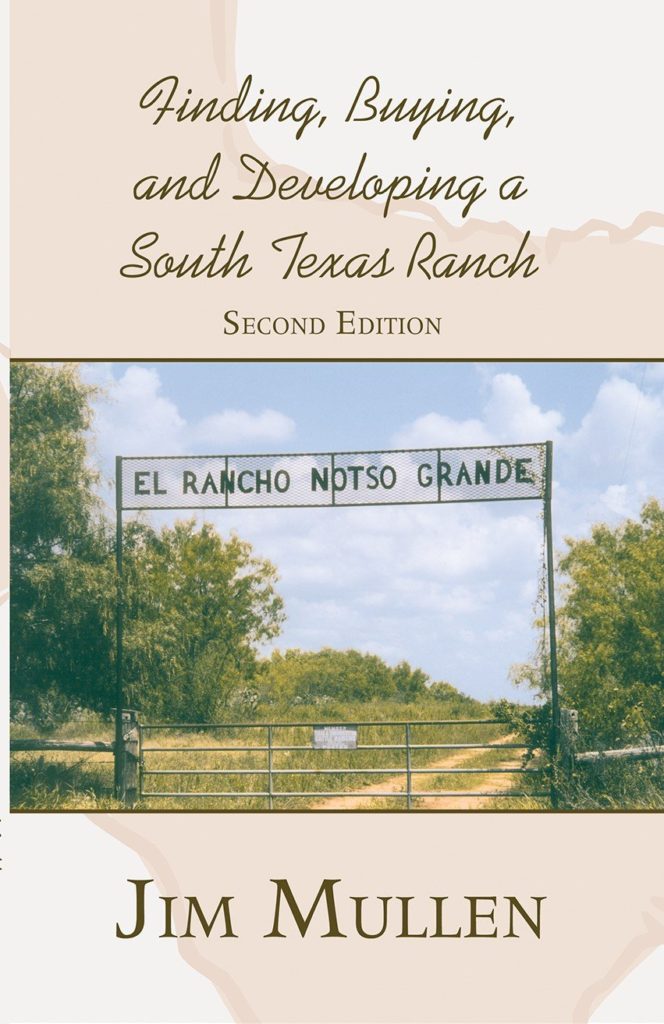
I was told early on in my education that in South Texas, the five year rainfall average was the result of four years of drought followed by a hurricane. Years as a ranch manager then as a consulting biologist have proven that adage; rainfall in South Texas is just not dependable. As of this writing, we are experiencing yet another dry spell, not yet classified as a drought but it does not look promising. In spite of this, the biological clocks of wild animals continue to tick. Whitetail does are bred with the next fawn crop and all wildlife is similarly trying to breed. Is water necessary for life, for reproduction? Dr. Jim Teer, a renowned wildlife biologist once told me of a doe that was inadvertently trapped in a 20 acre research enclosure at the Welder Wildlife Foundation. She remained in the enclosure unnoticed for two years and did well. It is important to note, however, that she did not reproduce, a significant drain on body moisture and she was near Sinton, Tx., which has higher humidity than most of South Texas. Of course, some species, Bobwhite quail for example, decrease or curtail their reproductive efforts in times of low rainfall/dry conditions, but life goes on and a poor reproductive effort will affect your population dynamics for years to come.

Water is available to wildlife in three forms, free water, what we would call “drinking” water, dew, the water deposited on plants by condensation, and pre-formed water, water that is held in food which is released to the consumer in digestion. In periods of low moisture, both dew and the water contained in food is reduced due to low humidity and lower than normal moisture uptake by plants. As wildlife managers we cannot materially effect these two other than by irrigating vegetation, which is expensive and affects only that relatively small area. The third source, free water or “drinking” water is also known as supplemental water and it can be provided in times of drought. Below is a discussion on how we can provide water to wildlife effectively and economically.
First of all, supplemental water needs to be dependable and accessible. I recommend that you work to have dependable, accessible water available within 1/2 of a mile of any point on your ranch/lease. Dependable means you should strive for water 24/7/365 and accessible means the water is available with enough cover so the animals of any species feel somewhat safe while consuming it. Any source of supplemental water should have a log or board anchored to the side so animals that fall in can easily climb out. I have bad memories of finding drowned birds in troughs I filled specifically to help them survive.
Ponds are the easiest way to supplement water and assuming decent clay soils and a watershed, need only secure access to fill the bill. If constructing a pond for wildlife, first look the site up on Web Soil Survey at the USDA website to see if it is rated “good” for ponds.

You or your contractor should strive for a 1:4 slope and dig it as deep as the equipment/the soils/and your budget allow. If you plan on a larger body of water, enlist the Natural Resource Conservation Service (NRCS) to design and plot the excavation. As mentioned, covered access is important, so leave some woody vegetation on at least one quarter of the hole or add brush piles on two spots along the margin. I once inherited a nice pond that the cows had cleared all vegetation away from the edges to a distance of maybe 30 yards. To improve secure access, I drove T posts and strung slick wire from the brush to the water’s edge then piled brush the length of the wire, improvising a hedgerow.

Well water is the next best choice and if available, can supply a system of several watering sites. Troughs as mentioned can be deathtraps and need an escape log/board and of course usually need additional covered access to make them inviting and safe to use. If you are a fawn just learning to run, or a bird the size of a beer can that everything loves to eat, good escape cover nearby makes all the difference in your use of supplemental water. For that reason, I prefer to pipe trough water to woody cover nearby ending in a small trough low to the ground, a hand-shaped concrete basin, or just a drip flow at the end of the line. If you go this route, I recommend using poly pipe rather than PVC as the hogs will invariably play with it and destroy anything rigid.
Lastly, if your property is all sandy soils that won’t hold water and well water is not available, I recommend rain water collection devices or “guzzlers”. Guzzlers are available commercially, but basic guzzlers are easy to make in a morning, fun to construct, as long a you don’t forget something back at the shop, and can gather a lot of water.


A cubic foot of water contains 7.48 gallons of water, so a 12’X12′ roof can gather 1,077 gallons of water with only 12 inches of rainfall! Any impervious surface can serve to collect rain water. Once I used a discarded TV antenna dish and it is still in use years later. My preferred material is corrugated tin on a frame of T posts and 2’X4’s. Just add a gutter, a storage tank if at all possible, and a line to a low trough and you’re good to go.


As always, if hogs are a problem, you need to armor any water lines. To be honest, I like to fence my wildlife water sources off entirely from hogs whenever possible. No reason to make it easy for those interlopers and guzzlers can easily be added to feeder enclosures.






